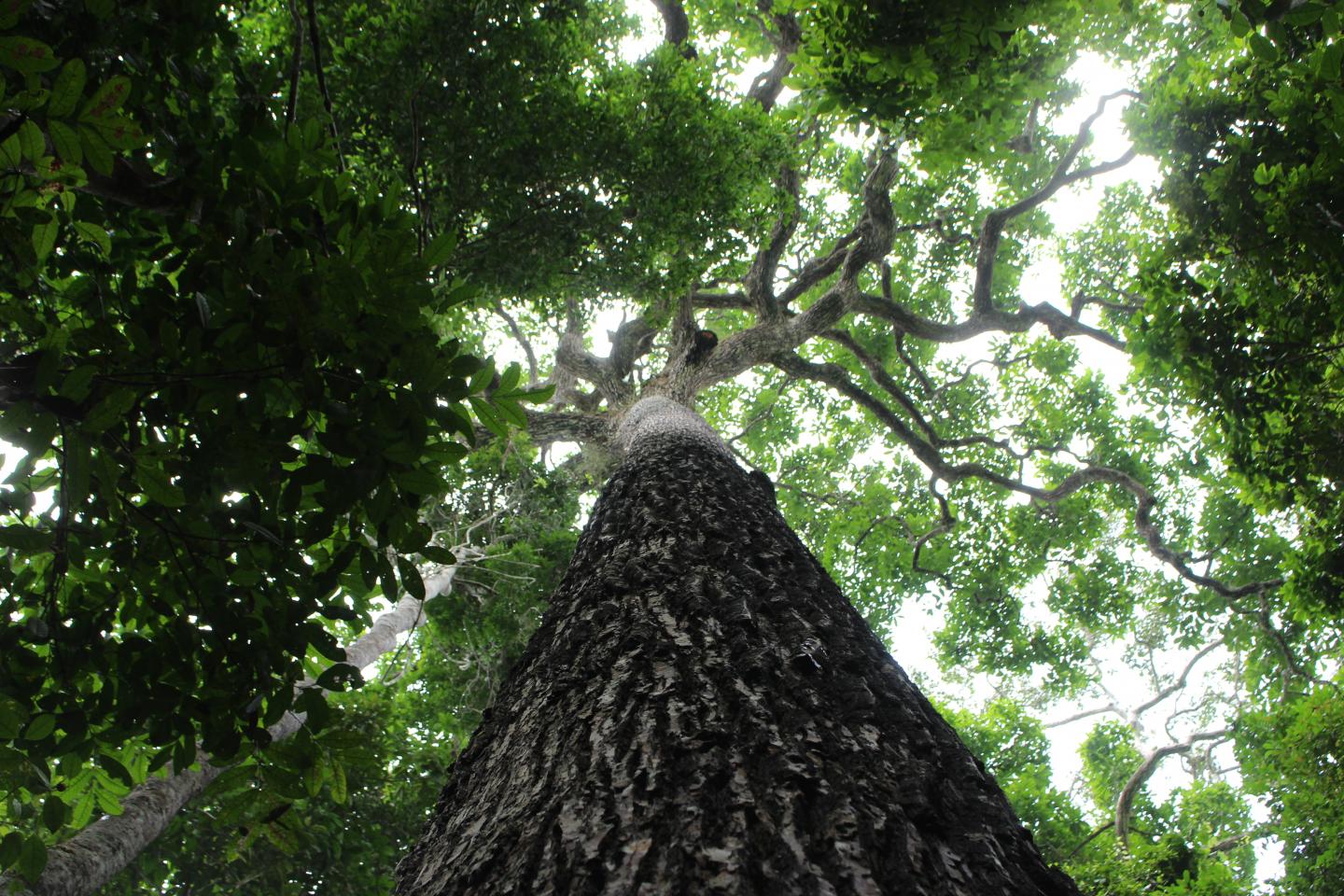
Credit: Victor Caetano-Andrade
As society has progressed, the annals of human history have been recorded through text, art, and oral tradition. However, for hundreds of years tropical forests have also kept detailed records of the human activities that unfolded around them. In a Review published February 6 in the journal Trends in Plant Science, researchers describe how the rings, physical chemistry, and DNA of living tropical trees reveal the impacts of native culture as well as the scars of colonial occupation.
“As trees grow, they absorb details about their surroundings into their wood, creating snapshots of the environment through time,” says first author Victor Caetano-Andrade (@VictorLCaetano1), a PhD candidate at the Max Planck Institute for the Science of Human History. “By combining techniques such as dendrochronology (the study of tree rings), carbon and oxygen isotope analysis, and genetics, we can obtain information about climate and the past human-mediated events in the rainforest.”
As trees are some of the most long-lived organisms on the planet–some tropical species live for up to 600 years–many of those standing in the rainforest today bore witness to significant changes in human history. When the biological information gathered from living trees is combined with archaeological and historical records of native rainforest societies, we can evaluate, for example, how indigenous communities or foreign invaders managed their local environment or how their actions influenced the recruitment and growth patterns of trees.
In this way, researchers can construct inferences about how ancient native peoples interacted with the rainforest and responded to colonial pressure: “When ancient humans constructed dwellings within the forest they selectively created gaps in the canopy, allowing for additional light to cultivate preferred species; this is one way native societies influence the establishment of trees within their territories,” says Caetano-Andrade. “One example is during the pre-colonial period in the central Amazon, where populations of Brazil nut experienced heavy recruitment and growth. However, when European colonists invaded the tropics, indigenous people abandoned the landscape, leading to Brazil nut trees to stop recruiting for nearly 70 years. This demonstrates how the forest actively responds to human occupation over time.”
Similarly, by analyzing the responses of trees to human activity during specific periods of time, tropical forests act as repositories of cultural heritage. Indigenous groups promoted the growth of trees they found useful, such as those for food or construction. The marks of this care remain implanted in the biology of standing trees. “Part of the culture of these societies is how they managed the forest within their local ecosystem,” says Caetano-Andrade. “As trees can live for hundreds of years, they register all of the impacts humans are making in the surrounding forest community.”
Caetano-Andrade hopes that reframing tropical trees as living sites of cultural history will help motivate additional efforts in rainforest preservation. And their findings show that native communities could build sustained, successful economic systems without depleting the rainforest of its resources.
“It’s possible to think of economic models that can keep the forest standing,” he says. “The proof is that it’s been happening for thousands of years before colonial expansions, as native people developed economic systems that maintained and even enriched the forest. Traditional populations who live on the riverbanks of tropical forests are the great heroes of preservation as they know the importance of keeping the forest standing to guarantee their well-being.”
###
This project was funded by the Max Planck Society.
Trends in Plant Science, Caeteno-Adrade et al.: “Tropical trees as time capsules of anthropogenic activity” https://www.cell.com/trends/plant-science/fulltext/S1360-1385(19)30335-8
Trends in Plant Science (@TrendsPlantSci), published by Cell Press, is a monthly review journal that features broad coverage of basic plant science, from molecular biology through to ecology. Aimed at researchers, students, and teachers, its articles are authoritative and written by both leaders in the field and rising stars. Visit: http://www.
Media Contact
Jordan A. Greer
[email protected]
617-417-7053
Related Journal Article
http://dx.





